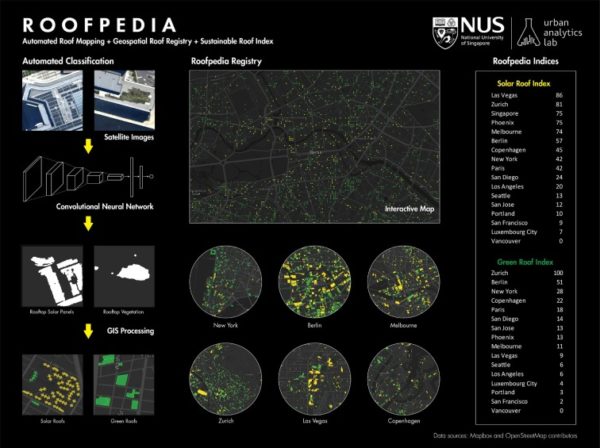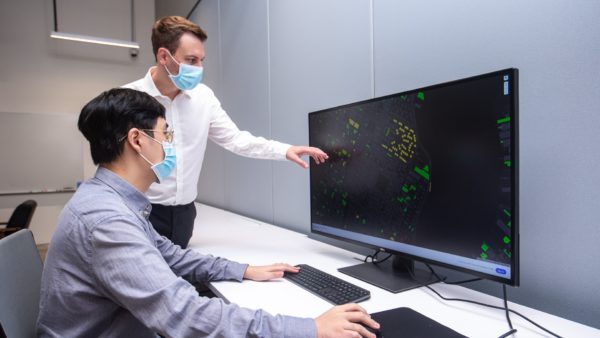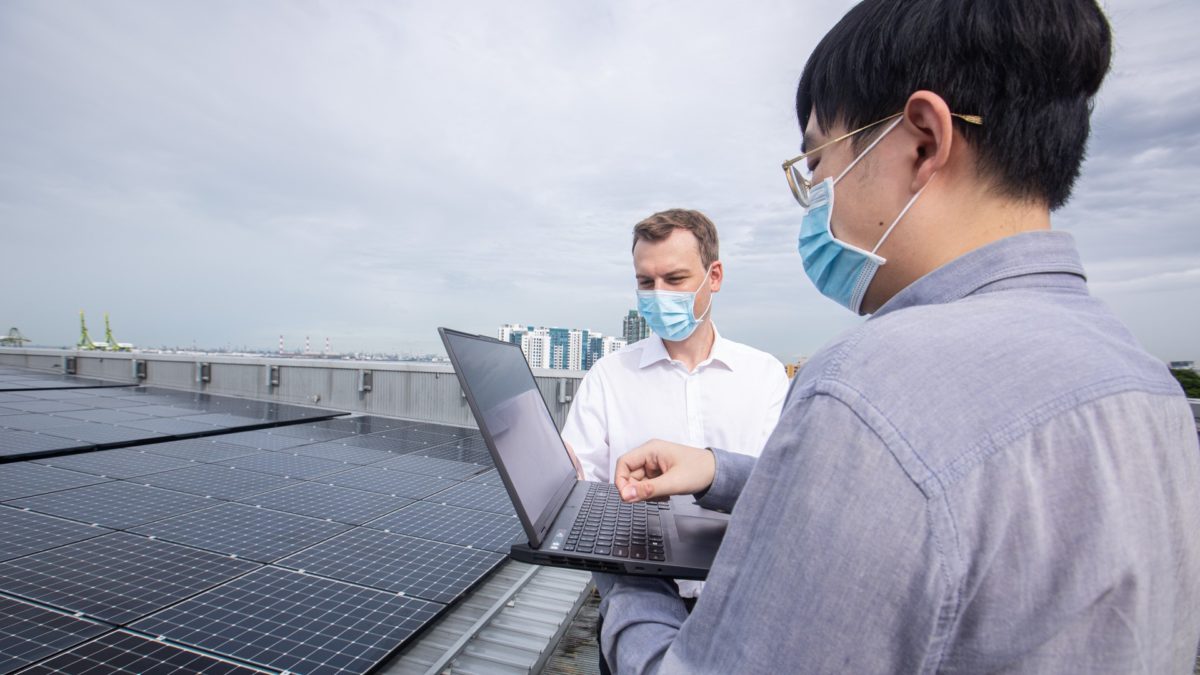Melbourne’s widespread take-up of rooftop solar PV has been highlighted by a team from the National University of Singapore (NUS) which has developed an automated tool that allows researchers and policymakers to study how cities worldwide are greening their rooftops and using them for solar installations.
Roofpedia is an open registry of satellite imagery and data of sustainable rooftops across 17 of the world’s most famous cities with Melbourne the only Australian city included in the initial data set. Other cities included are Berlin, Copenhagen, Las Vegas, Los Angeles, Luxembourg City, New York, Paris, Phoenix, Portland, San Diego, San Francisco, San Jose, Seattle, Singapore, Vancouver, and Zurich.
Roofpedia relies on software that identifies sustainable roof typologies from satellite images and buildings identified with solar panels or rooftop greenery are tagged automatically.
The data has been collated to formulate an index which the researchers have used to benchmark the cities in terms of solar PV and green roof penetration. The index considers both the area coverage and the number of buildings equipped with solar PV installations and green roofs in a city as a percentage value of the entire area.
Melbourne is ranked fifth out of the 17 cities for rooftop solar adoption, with a score of 74 out of a possible 100. Las Vegas, with a score of 86 headed the solar index with Zurich (score of 81) second.
Singapore and Phoenix tied for third in the solar index with 75 points each, just one ahead of Melbourne.
The Victorian capital, which is ranked among the nation’s rooftop solar hotspots, also finished fifth overall with a score of 43 having only scored 11 in the green index.
Zurich scored a perfect 100 in the green stakes to finish atop the overall table with a combined 91. Berlin was second overall with a combined 54 despite finishing sixth in the solar stakes with 57.

Image: NUS
Lead researcher Abraham Wu said the scoring system considers both building count and total building area, thus allowing users to study the degree of adoption by individual owners as well as the overall extent of rooftop solar and vegetation cover in other cities.
Wu said the unique characteristics of each city, including the geolocation and climate also play a part in determining the exact benefit of greenery or solar panels on rooftops.
Filip Biljecki, from the NUS School of Design and Environment, said most previous studies have focused on estimating the potential of rooftops whereas Roofpedia “enables us to understand the current and actual status of the rooftops, how many of them are currently occupied with solar panels and/or extensive greenery”.
“By collecting such data, Roofpedia allows us to gauge how cities might further utilise their rooftops to mitigate carbon emissions and how much untapped potential their roofscapes have,” he said.
“For example, users might complement Roofpedia with other sources of data to study the effectiveness of governmental subsidies and whether climate pledges of others have been followed.
“In addition, by collecting current data through satellite imagery, users can more accurately determine the present carbon offsetting capacity of cities as well.”
The research team has made Roofpedia’s data openly accessible in the hope that other researchers will help expand the database by tracking more cities or including other environmental indicators.

Image: NUS
Biljecki said the accuracy of Roofpedia’s results would depend on the quality and period of satellite images provided as well as whether the approach would distinguish other man-made features (such as skylights) from solar panels.
“Our project is designed to be open as cities today are dynamic and rapidly adopting sustainable instruments. In addition, its design is modular, meaning that new geographies, roof typologies, and functions can be added,” he said.
“As such, our research group is planning to add a temporal feature so that users can study the evolution of sustainable rooftop measures over time and how much more cities might increase their roofscapes.
“We hope that our work can aid researchers, local governments, and the public in understanding and promoting the further use of rooftops in achieving sustainable urban development for a carbon neutral world.”
This content is protected by copyright and may not be reused. If you want to cooperate with us and would like to reuse some of our content, please contact: editors@pv-magazine.com.









By submitting this form you agree to pv magazine using your data for the purposes of publishing your comment.
Your personal data will only be disclosed or otherwise transmitted to third parties for the purposes of spam filtering or if this is necessary for technical maintenance of the website. Any other transfer to third parties will not take place unless this is justified on the basis of applicable data protection regulations or if pv magazine is legally obliged to do so.
You may revoke this consent at any time with effect for the future, in which case your personal data will be deleted immediately. Otherwise, your data will be deleted if pv magazine has processed your request or the purpose of data storage is fulfilled.
Further information on data privacy can be found in our Data Protection Policy.